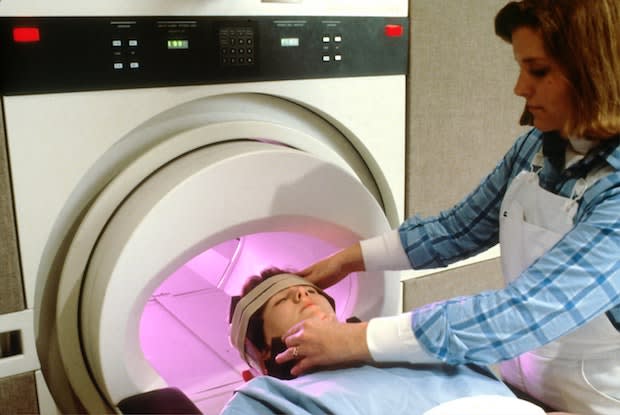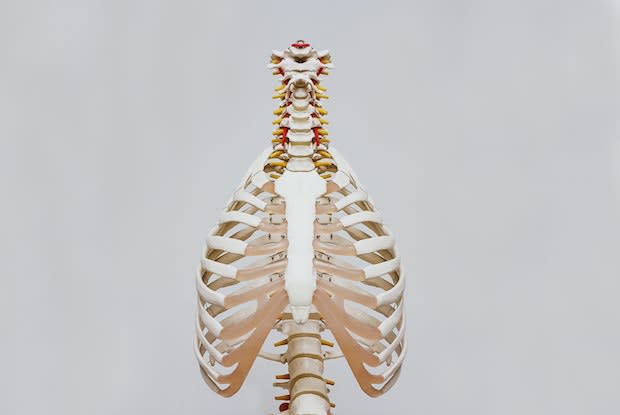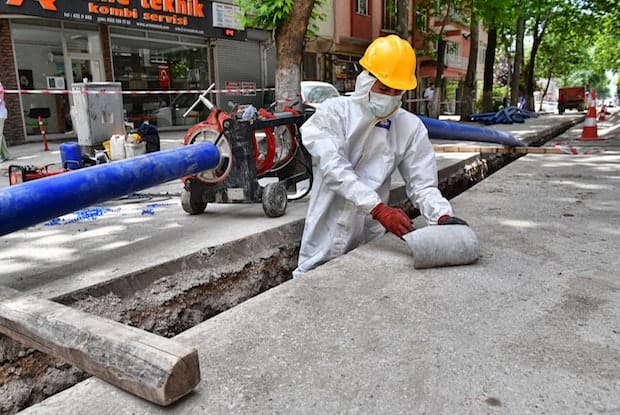Table of Contents
a. Idiopathic pulmonary fibrosis
b. Connective tissue-related pulmonary fibrosis (CT-ILD)
c. Familial Pulmonary Fibrosis (FPF)
a. Desquamative interstitial pneumonitis
b. Hypersensitivity Pneumonitis
VII. Medications and Treatments
Overview
Interstitial lung disease affects millions of people worldwide. ILD is a type of chronic respiratory disorder and causes a variety of symptoms. All patients with affected lung function must adjust to a different quality of life. Interstitial lung disease encompasses over 200 different conditions, but some are more common than others. There are several treatments for interstitial lung disease, including Prednisone (generic), but your doctor will help make up your treatment plan.
Pulmonary Fibrosis
The walls of the lung are normally thin and covered with millions of air sacs. If someone is afflicted with pulmonary fibrosis, those walls become stiff and make it more difficult for the lungs to expand. Because of the hardening walls, the body requires more energy to breathe, and this causes shortness of breath during regular daily activities. There are several different variations of pulmonary fibrosis, so every person diagnosed with PF has different symptoms and experiences. [1]

a. Idiopathic pulmonary fibrosis
Idiopathic Pulmonary Fibrosis (IPF) is the most common form of pulmonary fibrosis. It is idiopathic because there is no known cause for this illness, but it appears that the body’s immune response plays a vital role in IPF. There are around 132,000 people in the United States affected by this condition, and men over 50 are most commonly affected. Because the body is working harder to transfer oxygen, heart failure is common in IPF. The survival rate of IPF is a median of five years. [2]
b. Connective tissue-related pulmonary fibrosis (CT-ILD)
Interstitial lung disease often affects a small number of patients who suffer from connective tissue disorders (rheumatologic, autoimmune, or collagen vascular diseases). These diseases can include rheumatoid arthritis, Sjogren’s syndrome, lupus, and scleroderma, among others. CT-ILD also leads to scarring of the lungs, and the cause of the lung damage is unknown. People affected with this condition either develop pulmonary fibrosis first and then the connective tissue disorder or vice-versa. [3]
c. Familial pulmonary fibrosis (FPF)
Pulmonary fibrosis becomes familial when two or more people in a family are diagnosed with PF. Families can undergo genetic counseling to determine if they carry genes that cause familial pulmonary fibrosis. Genetic testing for familial PF is still in the early stages, so traditional biopsies and tests are still needed to prove the presence of the disease. [4]
There are also different types of FPF, including Idiopathic Interstitial Pneumonia (IIP) and Familial Interstitial Pneumonia (FIP). It is not uncommon for family members to have different types of FPF within the same family. [5]
Pneumonitis
Pneumonitis is a term used by doctors to describe noninfectious lung inflammations. Pneumonia is a type of pneumonitis because it results in the lung's inflammation tissue. Like many lung diseases, pneumonitis results in shortness of breath and a dry cough. Irritants such as chemotherapy drugs and airborne substances like mold can also cause this illness. [6]

a. Desquamative interstitial pneumonitis
This illness is a type of idiopathic interstitial pneumonia and is most often occurs in past and present smokers. People develop this disease in their 30’s or 40’s. In less common cases, autoimmune disorders, infections like HIV, or occupational hazards are the cause. [7] In clinical trials, smoking cessation improved bodily conditions by over 75%. The prognosis for desquamative interstitial pneumonitis is around 70% at 10 years. [8]
b. Hypersensitivity pneumonitis
This type of inflammation occurs around the air sacs (alveoli) and airways (bronchioles) in the lungs. Sensitivity to inhaled organic dust and chemicals causes this inflammation. A person usually has to have prolonged exposure to these substances for this type of hypersensitivity to become chronic. One such example is farmer’s lung, which results after repeated inhalation of heat-loving bacteria in moldy hay. Dust from the feathers of birds can also create a hypersensitivity pneumonitis known as bird fancier’s lung. Those affected have the symptoms mentioned above of coughing and shortness of breath, but the severity can vary. Respiratory failure can occur if the disease progresses without proper treatment. [9]
Occupational Hazards
The majority of interstitial lung diseases result from a combination of genetic and external factors, but some conditions occur from inhaling scarring materials. These inhalations most often happen in specific industries, like construction. These conditions are especially unpleasant because they usually do not occur until several years after exposure to the harmful substance. [10]
a. Asbestosis
This lung disease develops when asbestos fibers enter the body and scar the lungs. Once a scar occurs, breathing and the ability for oxygen to enter the bloodstream are compromised. Up until the mid-1970s, there were no federal regulations on the use of asbestos. Those who worked with asbestos before the new rules are now experiencing side effects. Estimates put asbestos-related deaths over 200,000 by the year 2030. The use of asbestos today is now highly monitored by the Occupational Safety and Health Administration (OSHA). [11]
b. Chronic silicosis
Exposure to silica dust causes silicosis. A person is at risk for silicosis if they are involved in drilling, chipping, the grinding of soil, granite, or other minerals. Silicosis can occur anytime the earth’s crust is disrupted in any way. Those who work in quarries, masonry, or sandblasting are at a higher risk for silicosis. Coughing is an early symptom, and chronic bronchitis-like symptoms also may occur. If you are likely to be exposed to silica dust over an extended period of time, medical examinations before a job placement and at least 3 years after the job are recommended. [12]
Sarcoidosis
Sarcoidosis is an inflammatory disease where small clumps of cells (granulomas) form in organs. This condition is more common in younger people between the ages of 20 and 40. This illness can occur in any part of the body, but it most often occurs in the lungs, making it an interstitial lung disease. There are many symptoms, but shortness of breath and wheezing are common as well as skin rashes and sores. The cause of sarcoidosis is a combination of genetics, race, and gender.
Like many ILDs, there is no cure for sarcoidosis, but symptoms often improve without treatment. The condition most often improves on its own, but prescribed medicine is given if the inflammation is severe. Most people with this condition do not experience any complications, but if the sarcoidosis becomes chronic, it can result in lung infection, cataracts, infertility, or glaucoma. These symptoms are not typical, and prognosis for this illness is usually positive and does not affect a person’s quality of life as much as other ILDs. [13]

Diagnoses
All of the interstitial lung diseases vary in degrees, but the tests used to diagnose them have many similarities. Blood tests are often used right off the bat to detect proteins and antibodies that are present in autoimmune diseases or inflammatory responses to environmental substances. After this test, computerized tomography (CT) scan x-rays the chest to identify the degree of lung damage or potential fibrosis. Because lung diseases take a toll on the heart, echocardiograms (sonograms) are done on the heart to determine its degree of functioning.
A person will also undergo spirometry and oximetry tests to gauge lung capacity and function. A spirometry test involves exhaling quickly into a tube connected to a machine that measures how much air your lungs can hold. The oximetry test is a device placed on the finger to measure oxygen saturation in the blood.
If these tests are not sufficient enough in determining an interstitial lung disease, lung tissue analyses take place. Diagnosis of pulmonary fibrosis can usually only occur through lung tissue analysis. The types of analysis include bronchoscopy, where a doctor inserts a tube down the patient’s throat where a tiny tissue sample is taken. Bronchoalveolar lavage is another method where a doctor injects a small amount of saltwater into the lung and suctions it out. The water that is collected contains the cells needed to determine the state of the lung’s air sacs.
The last technique most commonly used is a surgical biopsy. For this procedure, the patient is put under anesthesia, and an incision is made between the ribs. Through the incision, the doctor inserts a camera, which allows the viewing of the lung and the ability to snip tissue samples.
Medications and Treatment
Many medications help with the symptoms of various interstitial lung diseases. Corticosteroid medications like Prednisone (generic) often slow or stabilize the progression of the disease and prevent infection. A common symptom that accompanies many ILDs and autoimmune diseases is gastroesophageal reflux disease (GERD). It is common in those with pulmonary fibrosis because acid reflux is linked to increased damage to the lung. Medications like Prevacid and Prilosec help reduce stomach acid in patients with GERD. The generic form of Prevacid is lansoprazole and Prilosec also has generic omeprazole capsules.
Because most ILDs are not curable, a change in lifestyle is usually a good place to start for treatment. Smoking causes a vast majority of lung diseases, so inhaling any type of smoke into the lungs is highly discouraged. A routine of healthy eating and regular exercise (if a patient’s breathing allows) also improves symptoms.
Those who live with chronic lung diseases sometimes experience emotional struggles, so support groups help in adjusting to your new every day. Sharing feelings with loved ones and your doctor also helps in coping with the emotional and physical challenges of the disease. [14]
The content in this article is intended for informational purposes only. This website does not provide medical advice. In all circumstances, you should always seek the advice of your physician and/or other qualified health professionals(s) for drug, medical condition, or treatment advice. The content provided on this website is not a substitute for professional medical advice, diagnosis or treatment.
